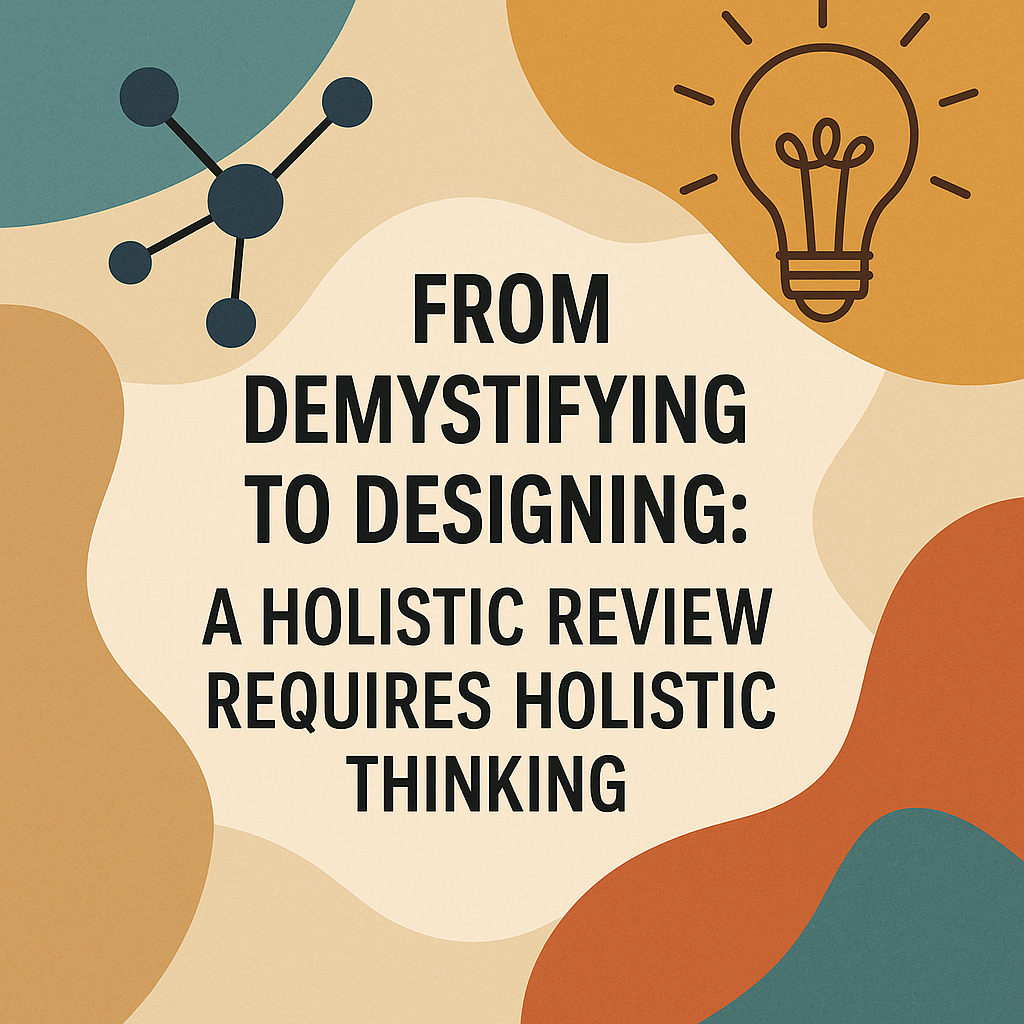From Demystifying to Designing: A Holistic Review Requires Holistic Thinking
Last month, we explored the Known-Unknown Matrix to help students and families make sense of what’s within control (and what isn’t) amid college admissions. We peeled back the layers of mystery to reveal what admissions officers are really looking for, and where uncertainty still exists. (If you missed it, you can read that post here.)
This month, we shift from understanding the process to shaping your story within it using the one canvas you’re given: the application. Since we’ve done the demystifying, it’s now on to designing. This is where the real work begins: putting the pieces of your application together in a way that tells a powerful, cohesive story. So, let’s get started!
1. Holistic Review: It’s All About Alignment
Most institutions these days adhere to what is called a “holistic review process.” In holistic admissions, colleges aren’t simply crunching numbers on your transcript or scanning your extracurriculars for that silver bullet. They’re reading your application like they’re viewing a portrait-- searching for dimension, depth, and a sense of purpose. Your job is not just to shine in a few key areas (like your GPA or test scores), but to instill a sense of alignment across your application that brings your full self into focus.
Think of it this way: Your GPA, test scores, activities, essays, and recommendations are all brushstrokes, providing texture and color to each layer of paint. When you’re constructing your profile, it’s how those brushstrokes come together and blend on the page that reveals its full artistry.
2. Systems-Thinking Approach: A Whole That’s As Great As Its Parts
Systems-thinking may seem like some abstract concept, but it’s a helpful frame to work through complex questions and can render a sprinkle of magic in your college application. When you think of something as a system, rather than a collection of parts, you start to understand the big picture-- You can actually see the forest for the trees.
Think of it this way: Systems-thinking asks you to step back and look at how each section of your application relates to each other. It’s less about what they say individually, but what they say together. This is what admissions officers are evaluating.
They ask themselves, “If we admit this student, what kind of person will they prove to be on our campus? What will they contribute to the fabric of our community?”
So make sure you answer those questions. To do that, you can start by asking yourself:
What patterns emerge across my activities, interests, and writing?
Do my essays reinforce the values I’ve demonstrated through my choices?
Is there a central thread that weaves through my story?
What attributes might be assigned to me when I am evaluated? Will it be curiosity, service, leadership, resilience, or something else?
When you take this approach, your application reads less like a list of accomplishments and more like a narrative that tells us who you are and who you hope to become in the future.
3. More Than A Number: Love of Learning and Care For Others Are Essential Ingredients
Yes, admissions committees want to know you can do the work. Your grades are important (of course, it wouldn’t be called school if they weren’t!), but colleges also want to know why you want to learn, where you place value, and how you respond to challenges. They want to hear about the ways you see yourself making an impact.
Admissions officers consider these qualitative factors key ingredients. Their goal is to make an honest assessment of the positive attributes you possess. To highlight your love of learning and care for others, you can showcase moments when you:
Explored an idea for its own sake, not just for a grade.
Solved a problem creatively or collaboratively in the interest of others.
Connected learning to real-world action or insight.
These aren’t just signs of a strong student. They’re signs of a strong thinker, a kind citizen, and a lifelong learner. These people with this type of character are the kinds of applicants colleges are excited to admit.
4. Your Story Is Your Power
By understanding the holistic process and embracing a systems-thinking mindset, you give yourself the best chance to stand out. You swap the illusion of rigid perfection with the reality of honest purpose.
You might recall how in last month’s blog, we identified your personal story as a “Known-Unknown.” It’s fully known to you, but unknown to the admissions committee until you choose to share it. That remains true.
It takes time, effort and a lot of heart, but when you design your application with purpose, and apply to every school with clarity, we hope you’ll find that each piece of the puzzle will naturally align, and colleges will see more than another strong candidate before them—they’ll see a full person, and a complete human being. And that’s what makes all the difference.
So remember: Your story is your power and you should take ownership of how that story is told. After all, your application is simply the canvas. What you paint is up to you.

